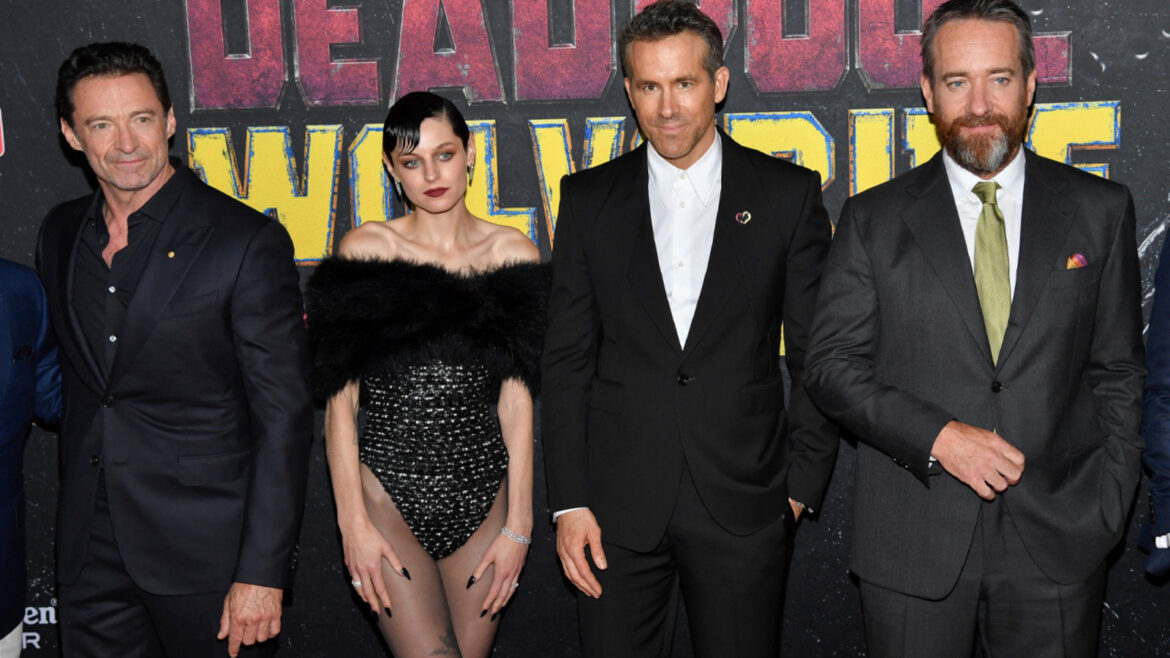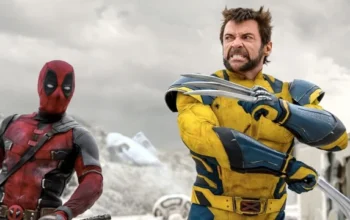Introduction to Deadpool
Deadpool, also known as Wade Wilson, is a fictional character in the Marvel Comics universe who has garnered immense popularity due to his unique characteristics and unconventional approach to the superhero genre. Created by writer Fabian Nicieza and artist Rob Liefeld, Deadpool made his first appearance in “The New Mutants” #98 in February 1991. Initially introduced as a villain, he has evolved into a complex anti-hero who oscillates between heroism and villainy.
One of the most distinctive features of Deadpool is his penchant for breaking the fourth wall, directly addressing the audience and acknowledging his existence within a comic book. This meta-humor sets him apart from other characters in the genre, providing a refreshing take on traditional superhero narratives. Deadpool’s dialogues are filled with wit, sarcasm, and a liberal dose of dark humor, making him a favorite among fans who appreciate his irreverent style.
Wade Wilson’s origin story is equally compelling. A former mercenary subjected to a rogue experiment designed to cure his terminal cancer, he gains accelerated healing powers at the cost of severe physical disfigurement and mental instability. This transformation renders him nearly immortal but also mentally unhinged, adding layers of complexity to his character. His healing factor allows him to survive injuries that would be fatal to others, further emphasizing his unique position within the Marvel Universe.
Deadpool’s blend of humor, violence, and moral ambiguity has struck a chord with readers and audiences alike. His anti-hero persona challenges the conventional tropes of the superhero genre, making him a relatable and intriguing figure. Whether in comic books, animated series, or blockbuster films, Deadpool continues to captivate audiences with his unpredictable antics and unwavering penchant for chaos. His enduring popularity is a testament to the creative genius of Nicieza and Liefeld, who crafted a character that defies norms while remaining deeply human and profoundly flawed.
Deadpool’s Origins and Backstory
Deadpool, also known as Wade Wilson, began his journey as a highly skilled mercenary. His life took a dramatic turn when he was diagnosed with terminal cancer. In a desperate attempt to find a cure, Wade volunteered for the Weapon X program, a clandestine government project that promised to heal him. The experiments conducted on him were both brutal and transformative. They bestowed him with a regenerative healing factor, akin to Wolverine’s, rendering him virtually immortal. However, the procedure had severe side effects, leaving him with a disfigured appearance and a significantly altered mental state.
The impact of the Weapon X experiments on Deadpool’s psyche cannot be overstated. The intense physical and emotional trauma fractured his mind, contributing to his erratic behavior and dark sense of humor. Despite the psychological toll, these experiences also forged a resilient and unpredictable anti-hero. The duality of his character—his capacity for both great violence and unexpected compassion—became a defining trait.
Several key moments in Wade Wilson’s past profoundly shaped his character. His tumultuous relationship with Vanessa Carlysle, his long-time love interest, added layers of emotional depth to his otherwise chaotic life. Their bond, though fraught with challenges, revealed a softer side to Deadpool, highlighting his capacity for love and loyalty. Another significant relationship was with his friend and bartender, Weasel, who often provided comic relief and essential support during Deadpool’s many escapades.
Deadpool’s rivalries also played a crucial role in his development. His ongoing feud with Cable, a time-traveling mutant soldier, frequently oscillated between intense conflict and reluctant partnership. This complex dynamic further enriched Deadpool’s narrative, showcasing his ability to navigate a world filled with moral ambiguities and shifting alliances.
Through these key events and relationships, Deadpool emerged as a multifaceted character, blending tragedy, humor, and unpredictability. His origins and backstory are not only integral to understanding his persona but also pivotal in appreciating the unique space he occupies within the Marvel universe.
The Unique Traits of Deadpool
Deadpool, also known as the “Merc with a Mouth,” stands out among superheroes due to a blend of unique traits that set him apart from the conventional archetype. One of his most notable abilities is his regenerative healing factor, a power that allows him to recover from virtually any injury at an accelerated rate. This ability, granted by the Weapon X program, not only makes him nearly indestructible but also adds to his reckless combat style, as he often engages in battles with little regard for his own safety.
In addition to his remarkable healing powers, Deadpool is a formidable combatant skilled in hand-to-hand combat and proficient with a wide array of weapons. From katanas to firearms, Deadpool’s arsenal is as diverse as his fighting techniques, making him a versatile and unpredictable opponent on the battlefield. His combat prowess is frequently showcased in both comics and movies, where he effortlessly takes down numerous adversaries, often with a mix of lethal efficiency and dark humor.
What truly distinguishes Deadpool from other superheroes is his tendency to break the fourth wall. This metafictional technique allows him to speak directly to the audience, acknowledging that he is a character within a story. This self-awareness adds a layer of complexity to his character and often serves as a vehicle for his sharp wit and satirical commentary. Instances of fourth-wall-breaking are prevalent in Deadpool’s comics and cinematic adaptations, providing a unique narrative experience that blurs the lines between fiction and reality.
Deadpool’s dark humor is another defining characteristic. His penchant for making irreverent jokes, even in the direst of situations, injects a sense of levity into his adventures. This humor, often laced with sarcasm and irony, reflects his coping mechanism for dealing with his traumatic past and chaotic life. Whether he is taunting his enemies or making light of his own predicaments, Deadpool’s humor is a constant presence that endears him to fans.
Adding to his complexity is Deadpool’s struggle with multiple personalities. These different personas often conflict with one another, contributing to his unpredictability and making him a character of depth and nuance. Examples from the comics, such as “Deadpool: Merc with a Mouth” and “Deadpool Kills the Marvel Universe,” illustrate how his multiple personalities influence his actions and decisions, creating a rich tapestry of motivations and internal conflicts.
In essence, Deadpool’s unique combination of regenerative healing, combat expertise, fourth-wall-breaking, dark humor, and multiple personalities make him a singular figure in the superhero genre. These traits not only define his character but also contribute to his enduring popularity and distinct identity within the Marvel Universe.
Deadpool in Comics
Deadpool, also known as the “Merc with a Mouth,” has carved a unique niche in the vast landscape of comic books since his debut in “New Mutants” #98 in 1991. Created by writer Fabian Nicieza and artist Rob Liefeld, Deadpool quickly rose to prominence due to his irreverent humor, fourth-wall-breaking antics, and complex personality. Over the years, various storylines and character arcs have cemented his status as an iconic anti-hero within the Marvel Universe.
One of the most significant storylines is “The Good, the Bad, and the Ugly,” where Deadpool teams up with Wolverine and Captain America. This arc delves into Deadpool’s tragic past, exploring the darker aspects of his character while balancing it with moments of levity. Another quintessential storyline is “Deadpool Kills the Marvel Universe,” a series where Deadpool, driven by madness, systematically eliminates every Marvel character. This narrative showcases the character’s unpredictability and the limitless possibilities within his universe.
Deadpool’s interactions with other Marvel characters and teams have added layers to his persona. His frequent clashes and collaborations with the X-Men, particularly with characters like Wolverine and Cable, highlight his complex relationships within the mutant community. Additionally, Deadpool’s occasional alliances with the Avengers, albeit often begrudgingly accepted, demonstrate his ability to adapt and function within larger superhero teams.
The evolution of Deadpool’s character over the years is a testament to the diverse array of writers and artists who have contributed to his stories. From Joe Kelly’s groundbreaking run that established Deadpool’s depth and humor, to Daniel Way’s exploration of his psychological struggles, each creative team has added their unique touch. Gerry Duggan and Brian Posehn’s run further expanded his mythos, introducing new characters and exploring his quest for redemption.
Deadpool’s journey in comics is a blend of humor, tragedy, and action, making him a multifaceted character beloved by fans. His ability to break the fourth wall, combined with his complex backstory and dynamic interactions with other Marvel characters, ensures that Deadpool remains a compelling figure in the comic book world.
Deadpool on the Big Screen
Deadpool’s transition from comic books to movies began with a contentious appearance in ‘X-Men Origins: Wolverine’ (2009). In this film, Ryan Reynolds portrayed a drastically altered version of the character, which received significant backlash from fans. This iteration of Deadpool deviated sharply from the comic book persona, stripping him of his signature wit and breaking the fourth wall, elements that are crucial to his identity. This negative reception underscored the fans’ passion for a more faithful adaptation of the Merc with a Mouth.
The character’s redemption came with the standalone ‘Deadpool’ film in 2016. Spearheaded by Ryan Reynolds, who was deeply committed to portraying an authentic version of Deadpool, the film was a labor of love, evident in its meticulous attention to the source material. Directed by Tim Miller, ‘Deadpool’ embraced the character’s irreverent humor, graphic violence, and meta-commentary, setting it apart from other superhero films. The film’s R-rating allowed for a more faithful representation of Deadpool’s chaotic and crude nature, resonating well with audiences.
‘Deadpool’ was a commercial and critical success, grossing over $780 million worldwide against a modest budget. Its success not only solidified Ryan Reynolds’ role as the definitive on-screen Deadpool but also demonstrated the viability of R-rated superhero films, paving the way for more mature-themed entries in the genre. The film’s innovative marketing campaigns and Reynolds’ charismatic performance were widely praised, with his comedic timing and physicality bringing Deadpool to life in a manner that delighted fans and newcomers alike.
The sequel, ‘Deadpool 2’ (2018), continued to build on this foundation, introducing new characters and expanding the Deadpool universe. Directed by David Leitch, the film was another hit, praised for its action sequences, humor, and emotional depth. Key moments, such as the formation of X-Force and the complex relationship dynamics explored, further cemented Deadpool’s unique place in the superhero film landscape.
Overall, Deadpool’s journey to the big screen has been transformative, significantly influencing the superhero genre and proving that unconventional characters can achieve mainstream success. The films’ blend of humor, action, and heartfelt moments, combined with Ryan Reynolds’ dedicated performance, have ensured Deadpool’s enduring popularity and critical acclaim.
Cultural Impact and Fanbase
Deadpool, often referred to as the “Merc with a Mouth,” has had a significant cultural impact since his inception. His irreverent humor, fourth-wall-breaking antics, and anti-hero persona have made him a standout figure in popular culture. One of the most noticeable aspects of Deadpool’s influence is the proliferation of memes. His witty and sarcastic one-liners are perfectly tailored for internet culture, resulting in countless viral memes that circulate widely across social media platforms.
Merchandise bearing Deadpool’s likeness, from action figures to apparel, has also seen immense popularity. His distinctive red and black costume and iconic mask are instantly recognizable, making him a favorite among collectors and fans alike. Moreover, Deadpool’s character has become a staple in the cosplay community. Fans frequently dress up as Deadpool at conventions and fan events, showcasing their creativity and dedication. This trend extends beyond mere costume replication; cosplayers often embody Deadpool’s personality, adding a layer of performance art to their portrayal.
Social media has played a crucial role in boosting Deadpool’s popularity. Platforms like Twitter, Instagram, and TikTok are rife with fan art, fan fiction, and video edits that celebrate the character. The interactive nature of social media allows fans to engage directly with content creators, actors, and each other, fostering a vibrant community. This digital age connectivity has allowed Deadpool’s fanbase to grow exponentially, transcending geographic boundaries.
Fan-driven events and conventions further underscore Deadpool’s cultural significance. These gatherings provide a space for fans to celebrate their shared enthusiasm through activities like panel discussions, workshops, and cosplay contests. The community’s creative contributions, such as fan art and fan fiction, are testament to Deadpool’s broad appeal and the deep connection fans feel with the character. His unique blend of humor, relatability, and subversion of traditional superhero tropes resonates strongly with audiences, solidifying his place as a cultural icon.
Controversies and Criticisms
Deadpool, often referred to as the “Merc with a Mouth,” has long been a polarizing figure in the realm of comics and films. One of the primary sources of controversy stems from the character’s violent and often crude humor. Deadpool’s propensity for breaking the fourth wall, coupled with his explicit language and graphic depictions of violence, has sparked significant debates regarding the appropriateness of his content, particularly for younger audiences. Critics argue that such elements can be gratuitous and offensive, leading to calls for censorship and more stringent content warnings.
Additionally, certain storylines and portrayals of Deadpool have elicited mixed reactions. For instance, the “Deadpool Kills the Marvel Universe” series, which features the character systematically eliminating beloved superheroes, has been both lauded for its boldness and criticized for its excessive brutality. Similarly, Deadpool’s on-screen adaptations have garnered varying responses. While many fans appreciate the faithful representation of his irreverent nature in films like “Deadpool” (2016) and “Deadpool 2” (2018), others believe that the cinematic portrayal sometimes crosses the line into tastelessness.
Defenders of Deadpool argue that his unconventional approach serves as a parody of traditional superhero tropes, offering a refreshing alternative to the often formulaic narratives within the genre. Creators and fans alike assert that Deadpool’s humor, though crude, is integral to his character, providing a unique blend of satire and self-awareness that distinguishes him from other superheroes. They also emphasize that the mature themes are clearly marketed towards an adult audience, thereby placing the onus on viewers to exercise discretion.
Ultimately, the controversies and criticisms surrounding Deadpool highlight the broader discourse on content appropriateness and creative freedom. While opinions on the character’s impact vary, there is no denying that Deadpool continues to challenge and redefine the boundaries of the superhero genre, making him a subject of enduring intrigue and debate.
The Future of Deadpool
The future of Deadpool in the realms of comics, movies, and other media holds much promise as the character continues to capture the imagination of audiences worldwide. With the acquisition of 21st Century Fox by Disney, Deadpool is now poised to enter the Marvel Cinematic Universe (MCU), creating a plethora of opportunities for new storylines and crossovers. The integration of Deadpool into the MCU raises fascinating questions about how this irreverent, fourth-wall-breaking character will interact with the more established heroes of the franchise.
Upcoming projects indicate that Deadpool will retain his unique brand of humor and action. Confirmed reports suggest that “Deadpool 3” is in active development, with Ryan Reynolds returning to reprise his role. This film is anticipated to merge the distinct tone of Deadpool with the broader MCU, potentially featuring cameos from other Marvel characters, thereby enriching the narrative landscape. Speculations abound regarding Deadpool’s interactions with characters like Spider-Man, Thor, or the Guardians of the Galaxy, which could result in dynamic and entertaining story arcs.
In the world of comics, Deadpool continues to evolve with new storylines that push the boundaries of his character. Recent series have delved into different aspects of his personality, exploring themes of redemption, identity, and morality, while maintaining the dark humor and meta-commentary that fans adore. Future comic arcs are expected to further develop these themes, potentially introducing new adversaries and allies, thereby expanding Deadpool’s universe.
Moreover, there are rumors of Deadpool appearing in various Disney+ series, allowing for more experimental and serialized storytelling. This platform could offer deeper character development and exploration of lesser-known aspects of his backstory. With the potential for both animated and live-action series, Deadpool’s presence in the streaming landscape is set to grow.
In essence, the future of Deadpool is bright and multifaceted. As he ventures into new territories within the MCU and beyond, his character is likely to undergo significant evolution while continuing to entertain and surprise audiences. The Merc with a Mouth remains a dynamic and beloved figure, with endless possibilities for his narrative journey.



